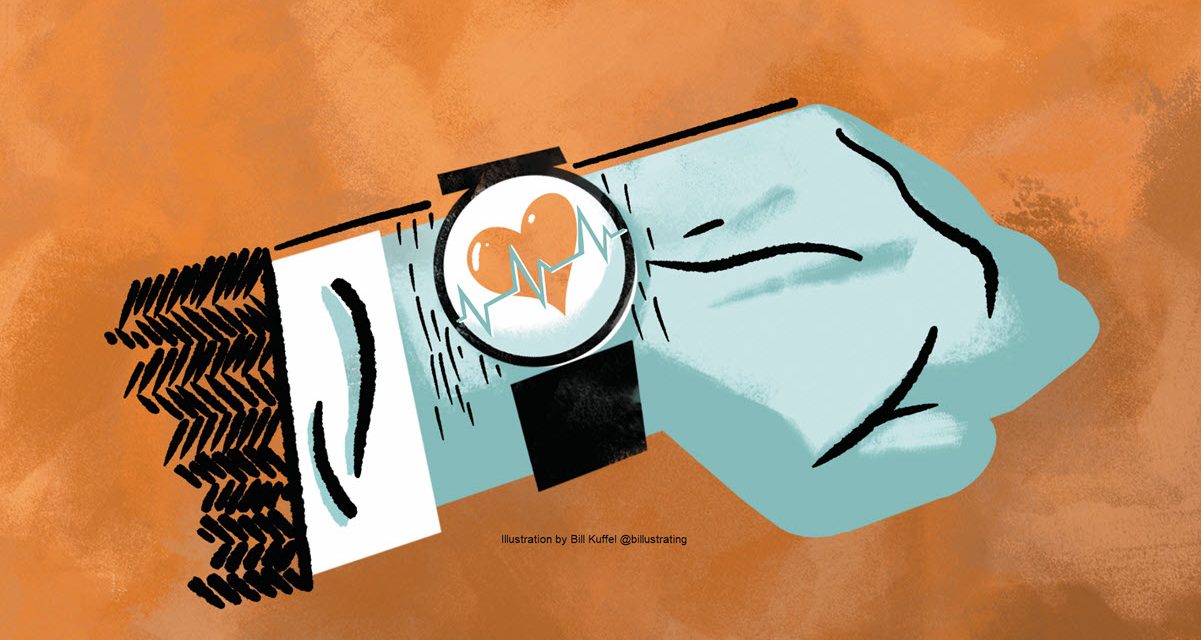Don’t look back!
Cell phones have been a part of my business since their inception. I had one that looked like a big walkie talkie, the Motorola brick, flip phones and Blackberrys (one of my favorite phones because of the keyboard). If I call customer service now, the person I am talking to usually wasn’t even born when I opened my account.
The business model for mobile phones is pretty good (for the phone companies). Your phone goes out of date after a couple years and your support for the device follows. But not to worry, they offer you a replacement phone in a great package and sometimes with a trade-in value for the old worthless phone. If you don’t trade up, the old phone loses its service, security updates, and battery life anyway.
A number of years ago I started using Samsung phones (no, I’m not affiliated; they are just the current brand I’m using). They persuaded me when I needed to upgrade my phone, and they threw in a smart “fitness” watch with the phone. This seemed like a great way to keep track of my steps. Just like the phones, when the old watch wore out and it needed an upgrade, they had brand new versions that tracked even more stuff! So sure enough, now both my wife and I have up-to-date smart watches. The watch keeps track of steps, heartbeat, how well I sleep at night and more. It’s actually way more than I need to know. But like the phones, I can’t go back to the simpler version anymore.
These new smart watches even offer users an indication as to some health situations, including minimal ECG monitoring and oxygen levels. In fact, I just read: “Samsung Electronics announced that the sleep apnea feature on the Samsung Health Monitor app has received de novo authorization from the U.S. Food and Drug Administration (FDA).” So now your smartphone and fitness watch may be able to tell you if you have heart issues, breathing trouble, etc.
For example, recently there was a story about how one of these smart watches alerted its owner that they were having sleep issues. The owner then contacted their regular doctor who in turn connected them with a sleep doctor.
The sleep doctor sent them home with a similar watch device, but more official, that the user wore for an actual sleep test. In the end, the person was diagnosed with Obstructive Sleep Apnea and was prescribed a CPAP machine.
So, what started with this little smart watch, bought to count their daily steps, turned into an actual medical diagnosis that could save their life.
As another example, I recently visited Keystone, Colorado for a couple of days. I’ve flown most of my life and have never been physically bothered flying at high altitudes. But during that trip, I had a really hard time breathing up in the mountains. My smart watch confirmed my oxygen levels were low. At one point, it got so bad I had to get checked out by a doctor and was diagnosed with Acute Mountain Sickness due to the high altitude/low oxygen.
In the old days, without the smart watch, I may have just chalked it up to allergies or a cold and suffered through the rest of the trip but because of the watch warnings, I was able to get more information that pushed me to go to the doctor.
So Where Am I Going with This?
With new technology come new questions. If the owner of a smart watch was a pilot, information like this could be detrimental to their medical or career in general. If a pilot has a smart watch and gets a similar reading, are they going to talk to their doctor if it could affect their ability to fly? What do they tell the FAA? Does a Sport pilot, who self-certifies their health, need to change anything? What do they do with their insurance?
These are all things we wouldn’t have thought about before, because we didn’t have the information this type of technology is now providing.
I won’t talk about what should and shouldn’t be discussed with a doctor. That is up to the individual and their doctor. I also won’t talk about what you should or shouldn’t say to the FAA. That is between the individual and the FAA. Their rules and requirements can be found online. What I will talk about is the insurance.
In the past, most insureds in this kind of situation would probably lower their insurance coverage on their aircraft from full coverage (ground and flight) to something like ground not in motion. Since they might not be flying, why pay for full coverage? Others might just cancel the policy in general, or not renew – the thought being that if you can’t fly, why pay for the coverage, right?
But insurance has tightened up when it comes to changes in coverage. For years we could willy-nilly change coverage on policies. If a customer was going to be gone for a while we could lower coverage to ground not in motion coverage and then back to ground and flight when they were back. They could do this multiple times a year.
Then the underwriters started to put restrictions on it, such as only one (up and down) policy change per year. So, if you were going on vacation for a couple weeks and weren’t going to fly your plane during that time, you could lower coverage. Then when you returned, you would raise it back up but that would be the extent of the changes you could make for that year.
Now, in addition to the limited number of changes, they have a minimum time before they will change coverage back. Typically, the minimum is 90+ days before they can change coverage again. If we use the vacation example from above, a couple weeks wouldn’t be enough time; it would have to be a very long vacation for the underwriters to consider that coverage change. More than likely this type of change would now need to be something like storing the plane for the winter, or prolonged maintenance.
They have also become much stricter on new policies, especially when it comes to older pilots. Most companies will not even look at pilots over the age of 69.
Why Is This Important?
If you are having difficulty getting a medical for whatever reason, don’t cancel your insurance. Recently we have had insureds want to park their aircraft and reduce their premiums while they battle with the FAA. This process takes a lot of time to get the special issuance or a basic third class back, so why not just suspend or cancel the coverage?
Based on what we discussed, the insurance company might not be willing to increase the coverage back again, or not in the timeframe you want. And if you cancel your policy, they have no obligation to even quote you again. This is a big problem for older pilots, pilots with recent claims, owners of planes that most insurance companies don’t like, etc.
IS SLEEP APNEA A DEAL BREAKER?
The FAA website and their Guide for Aviation Medical Examiners says “Sleep apnea has significant safety implications due to cognitive impairment secondary to the lack of restorative sleep and is disqualifying for airman medical certification.”
What about your medical certificate?
More from the FAA, “If your Obstructive Sleep Apnea is treatable, you can maintain your airman medical certificate and continue to enjoy your aviation career. However, flying with untreated OSA constitutes an unnecessary risk and can become a safety-of-flight issue.”
Recently we had an older pilot with two aircraft who had a claim on one of them. Since it would take a while to repair, and it was over the winter he decided (against our recommendations) not to renew the insurance on the damaged aircraft. When spring arrived and the repairs were completed, he decided to try and get coverage again. He couldn’t. As a pilot in his late 70’s and with a claim on his record, no company would quote the aircraft.
His only hope was from the previous insurance company he had the claim with. Unfortunately, since he did not keep coverage on the damaged plane, they could not start a “new” policy for him. Their restrictions would not allow them to quote a pilot of his age, especially with the recent claim, on a “new” policy. So, because he wanted to save a little money in the interim, he is never going to be able to get insurance on that plane again. It’s unfortunate, but the way the market is currently (and I don’t see it getting any better anytime soon).
As a final note, I have this “earworm” in my head. You know those songs that won’t go away? This one is from Don Henley called the “Boys of Summer”. The line I hear is: “Out on the road today, I saw a DEADHEAD sticker on a Cadillac. A little voice inside my head said, “Don’t look back. You can never look back””
And I think that’s appropriate, whether it’s cell phones, smart watches or insurance coverage, sometimes “you can never go back.”
Five things to think about before you change or stop coverage:
- Age is important.
- Check if there are minimum time periods or restrictions.
- Check before reducing coverage for repairs or upgrades.
- Don’t cancel coverage for a short period (like over winter).
- Don’t let your coverage expire. In some cases, it would be better to have some coverage (liability only) instead of no coverage.






